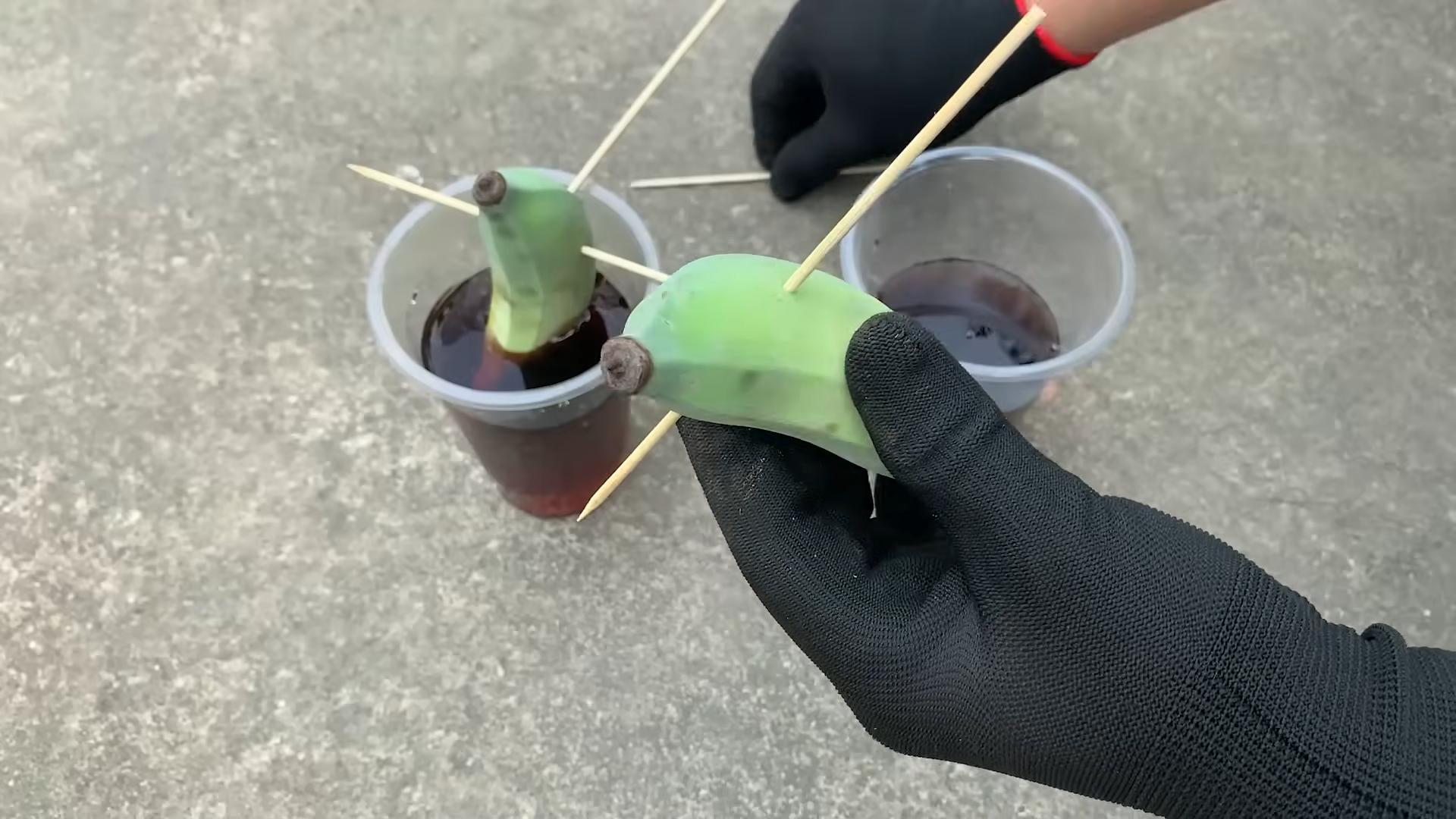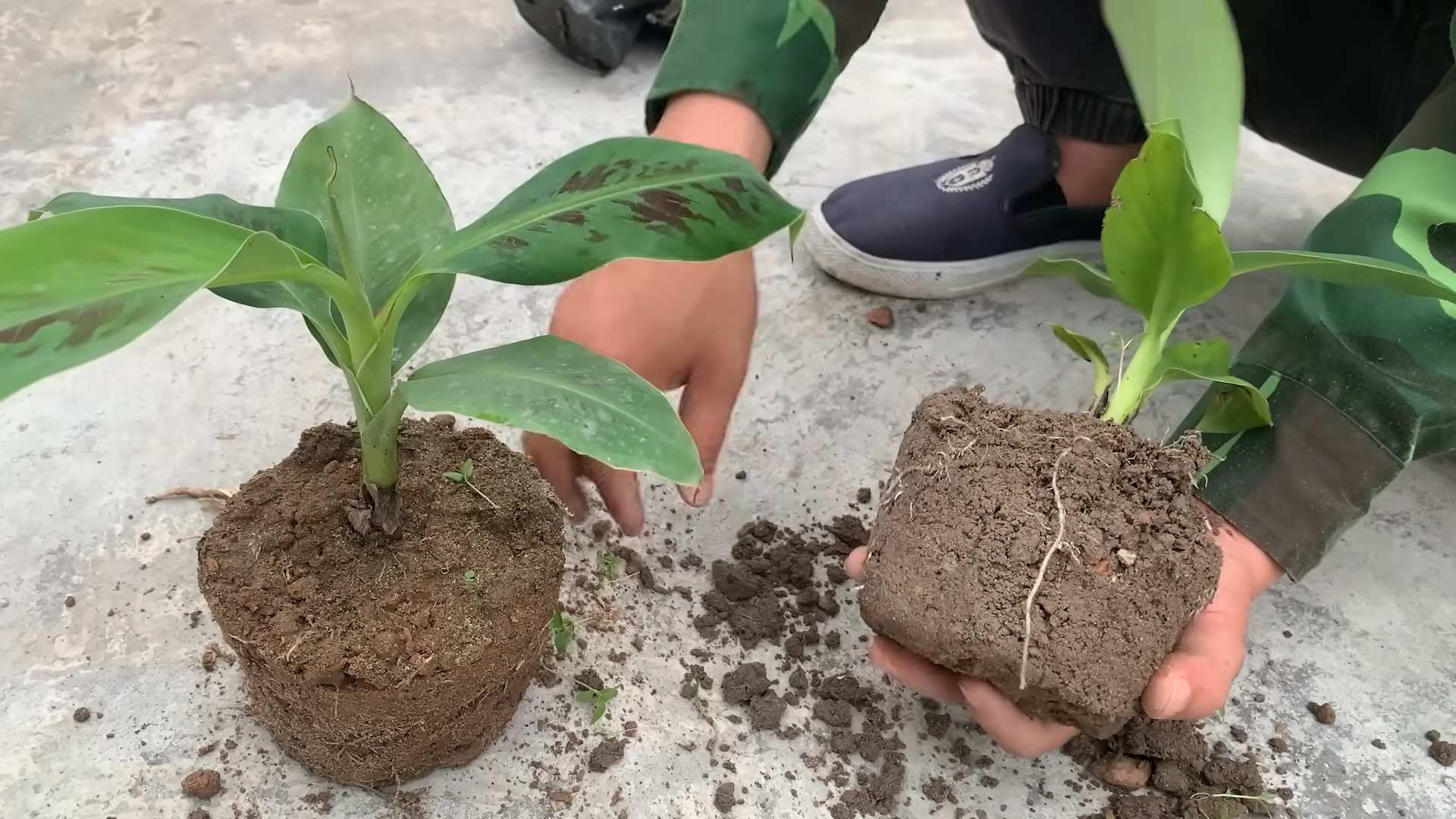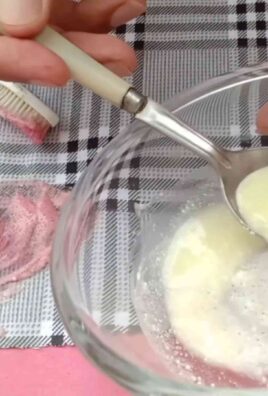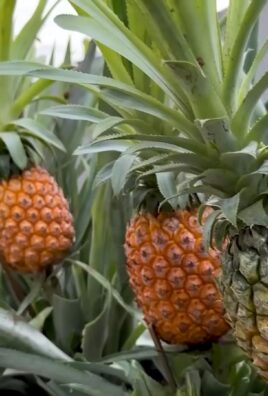Banana plant propagation might sound intimidating, but trust me, it’s easier than you think! Have you ever admired those lush, tropical banana plants and wished you could have your own mini-plantation at home? Well, you absolutely can! This isn’t just about having a pretty plant; it’s about connecting with a tradition that stretches back centuries. Bananas, originating in Southeast Asia, have been cultivated and revered for their nutritional value and cultural significance for thousands of years. Imagine continuing that legacy in your own backyard!
But why bother with banana plant propagation? Well, for starters, buying mature banana plants can be expensive. Plus, propagating your own allows you to multiply your existing plants and share them with friends and family. More importantly, it’s incredibly rewarding to nurture a new plant from a small offshoot and watch it thrive. In this article, I’m going to share some simple, DIY tricks and hacks that will empower you to successfully propagate your own banana plants, even if you’ve never gardened before. Get ready to unleash your inner green thumb and enjoy the satisfaction of growing your own tropical paradise!

Propagating Banana Plants: A Beginner’s Guide to Growing Your Own Tropical Paradise
Okay, so you’re dreaming of a mini-banana plantation in your backyard, or maybe just want to expand your existing banana family? I get it! Banana plants are gorgeous, and the thought of harvesting your own bananas is incredibly appealing. The good news is, propagating them isn’t as tricky as you might think. I’m going to walk you through the process, step-by-step, so you can successfully grow new banana plants from your existing one.
Understanding Banana Plant Propagation
Before we dive in, let’s quickly cover the basics. Banana plants don’t grow from seeds (at least, not the edible bananas we’re used to). Instead, they reproduce through “pups,” which are essentially baby banana plants that sprout from the base of the mother plant. These pups are clones of the parent, meaning they’ll produce the same type of bananas.
There are two main methods we’ll be focusing on:
* **Separating Pups:** This involves carefully digging up and separating the pups from the mother plant. It’s the most common and reliable method.
* **Rhizome Division:** This is a bit more involved and usually done when repotting a banana plant. It involves cutting the rhizome (the underground stem) into sections, each with its own growth point.
We’ll primarily focus on separating pups, as it’s the easiest for beginners.
Materials You’ll Need
Before you start hacking away at your banana plant, gather these supplies:
* A healthy banana plant with pups (obviously!). Look for pups that are at least 1-3 feet tall.
* A sharp, clean knife or pruning saw. Sanitation is key to prevent disease! I recommend wiping it down with rubbing alcohol.
* A shovel or spade.
* Pots or containers for the new pups. Choose pots that are appropriately sized for the pups you’re separating. A 6-8 inch pot is usually a good starting point.
* Well-draining potting mix. Banana plants like rich, well-draining soil. A mix of potting soil, compost, and perlite works well.
* Gardening gloves (optional, but recommended).
* Watering can or hose.
* Rooting hormone (optional, but it can help encourage root growth).
Separating Banana Pups: Step-by-Step
Alright, let’s get our hands dirty! Here’s how to separate those banana pups:
1. **Prepare the Pots:** Fill your pots with the well-draining potting mix. Leave about an inch of space at the top. Water the soil thoroughly so it’s nice and moist. This will help the pups settle in.
2. **Locate the Pups:** Carefully examine the base of your banana plant and identify the pups you want to separate. Look for pups that have their own leaves and are a decent size. Smaller pups are less likely to survive on their own.
3. **Dig Around the Pup:** Using your shovel or spade, carefully dig around the base of the pup you’ve chosen. Be gentle! You don’t want to damage the roots of either the pup or the mother plant. Dig down deep enough to expose the point where the pup is connected to the mother plant’s rhizome.
4. **Sever the Connection:** This is the crucial part. Using your sharp, clean knife or pruning saw, carefully sever the connection between the pup and the mother plant. Make a clean cut to minimize damage. You might need to wiggle the pup a bit to fully detach it. Be careful not to cut yourself!
5. **Remove the Pup:** Gently lift the pup out of the ground. Try to keep as much of the root system intact as possible. If the roots are tangled with the mother plant’s roots, carefully tease them apart.
6. **Inspect the Roots:** Once you’ve removed the pup, inspect its roots. Trim away any damaged or dead roots with your clean knife or pruning shears.
7. **Dip in Rooting Hormone (Optional):** If you’re using rooting hormone, dip the cut end of the pup’s rhizome into the powder or liquid. This will help stimulate root growth. Follow the instructions on the rooting hormone packaging.
8. **Plant the Pup:** Place the pup in the prepared pot, making sure the top of the rhizome is just below the soil surface. Gently backfill the pot with potting mix, firming the soil around the pup.
9. **Water Thoroughly:** Water the newly planted pup thoroughly until water drains out of the bottom of the pot. This will help settle the soil and hydrate the roots.
10. **Provide Proper Care:** Place the potted pup in a warm, sunny location. Banana plants need plenty of sunlight to thrive. Water regularly, keeping the soil consistently moist but not soggy. Avoid overwatering, as this can lead to root rot.
Post-Propagation Care: Ensuring Success
Okay, you’ve successfully separated and potted your banana pup. Now what? Here’s how to ensure it thrives:
* **Sunlight:** Banana plants are sun-worshippers! Aim for at least 6-8 hours of direct sunlight per day. If you’re growing your banana plant indoors, place it near a sunny window or supplement with grow lights.
* **Watering:** Water regularly, especially during hot weather. The soil should be consistently moist, but not waterlogged. Check the soil moisture by sticking your finger into the soil. If the top inch feels dry, it’s time to water. Reduce watering during the winter months when the plant is not actively growing.
* **Fertilizing:** Banana plants are heavy feeders. Fertilize regularly with a balanced fertilizer, following the instructions on the fertilizer packaging. You can also supplement with organic fertilizers like compost or worm castings.
* **Humidity:** Banana plants love humidity. If you live in a dry climate, you can increase humidity by misting the leaves regularly, placing a humidifier near the plant, or setting the pot on a tray filled with pebbles and water.
* **Temperature:** Banana plants prefer warm temperatures. Protect them from frost and freezing temperatures. If you live in a cold climate, you’ll need to bring your banana plant indoors during the winter.
* **Pest Control:** Keep an eye out for pests like aphids, spider mites, and mealybugs. If you spot any pests, treat them promptly with insecticidal soap or neem oil.
* **Repotting:** As your banana plant grows, it will eventually need to be repotted into a larger container. Repot when the roots start to circle the bottom of the pot.
Troubleshooting Common Issues
Even with the best care, you might encounter some issues along the way. Here are a few common problems and how to fix them:
* **Yellowing Leaves:** This can be caused by a variety of factors, including overwatering, underwatering, nutrient deficiencies, or pests. Check the soil moisture and adjust your watering accordingly. Fertilize regularly and inspect the plant for pests.
* **Brown Leaf Tips:** This is often caused by dry air or inconsistent watering. Increase humidity and water more consistently.
* **Slow Growth:** This can be caused by insufficient sunlight, nutrient deficiencies, or cold temperatures. Move the plant to a sunnier location, fertilize regularly, and protect it from cold temperatures.
* **Root Rot:** This is caused by overwatering and poor drainage. Make sure your potting mix is well-draining and avoid overwatering. If you suspect root rot, repot the plant in fresh soil and trim away any rotten roots.
Rhizome Division: An Alternative Propagation Method
While separating pups is generally easier, rhizome division can be a useful method, especially when repotting a mature banana plant. Here’s a brief overview:
1. **Unpot the Plant:** Carefully remove the banana plant from its pot.
2. **Inspect the Rhizome:** Examine the rhizome (the underground stem) and identify sections that have their own growth points (eyes or small shoots).
3. **Divide the Rhizome:** Using a sharp, clean knife or pruning saw, cut the rhizome into sections, ensuring each section has at least one growth point and some roots.
4. **Plant the Sections:** Plant each rhizome section in its own pot filled with well-draining potting mix.
5. **Care for the New Plants:** Water thoroughly and provide the same care as you would for pups separated from the mother plant.
Final Thoughts
Propagating banana plants is a rewarding experience that allows you to expand your collection and enjoy the beauty of these tropical plants. With a little patience and care, you can successfully grow new banana plants from your existing one. Don’t be discouraged if your first attempt isn’t perfect. Like anything, practice makes perfect! And who knows, maybe one day you’ll be harvesting your own delicious bananas! Good luck, and happy growing!

Conclusion
So, there you have it! Mastering banana plant propagation isn’t just about saving money; it’s about connecting with nature, understanding the life cycle of these incredible plants, and enjoying the satisfaction of nurturing new life from something you already have. This DIY trick is a must-try for any gardening enthusiast, whether you’re a seasoned pro or just starting out. The process is surprisingly simple, yet the rewards are immense. Imagine expanding your banana grove, sharing pups with friends and family, or even starting a small business selling organically grown banana plants. The possibilities are truly endless.
Beyond the basic method outlined, there are several exciting variations you can explore. For instance, some gardeners have success using rooting hormones to encourage faster root development. Others experiment with different potting mixes, such as a blend of coco coir, perlite, and compost, to provide optimal drainage and nutrients. You can also try propagating pups of different sizes, observing how their growth rates vary. Remember to always sanitize your tools to prevent the spread of diseases.
Don’t be afraid to experiment and adapt the technique to suit your specific environment and resources. The key is to be patient, observant, and persistent. Banana plants are resilient and forgiving, so even if your first attempt isn’t perfect, don’t give up! Each attempt is a learning opportunity that will bring you closer to mastering the art of banana plant propagation.
We wholeheartedly encourage you to try this DIY trick and experience the joy of growing your own banana plants. It’s a rewarding and sustainable way to expand your garden and enjoy the delicious fruits of your labor. Once you’ve successfully propagated your banana pups, we’d love to hear about your experience! Share your tips, tricks, and photos in the comments below. Let’s create a community of banana plant enthusiasts and learn from each other’s successes and challenges. Together, we can unlock the secrets of banana plant propagation and enjoy the abundance of these amazing plants. Happy gardening!
Frequently Asked Questions (FAQ)
Q: What is the best time of year to propagate banana plants?
A: The ideal time for banana plant propagation is during the warmer months, typically spring or early summer. This is when the plants are actively growing and have the best chance of developing strong roots. However, if you live in a tropical or subtropical climate, you can propagate banana plants year-round, provided you can maintain consistent warmth and humidity. Avoid propagating during the coldest months, as the pups may struggle to establish themselves.
Q: How long does it take for a banana pup to develop roots?
A: The time it takes for a banana pup to develop roots can vary depending on several factors, including the size of the pup, the environmental conditions, and the specific banana variety. Generally, you can expect to see roots emerging within 2 to 6 weeks. It’s important to maintain consistent moisture and warmth during this period to encourage root development. Be patient and avoid disturbing the pup too frequently, as this can hinder the rooting process.
Q: What type of potting mix is best for banana pups?
A: A well-draining potting mix is essential for successful banana plant propagation. A good option is a blend of equal parts coco coir, perlite, and compost. Coco coir provides excellent moisture retention, perlite improves drainage, and compost adds essential nutrients. You can also use a commercially available potting mix specifically formulated for tropical plants. Avoid using heavy clay soils, as they can become waterlogged and lead to root rot.
Q: How often should I water the banana pups after planting?
A: After planting the banana pups, water them thoroughly to settle the soil around the roots. Then, water regularly to keep the soil consistently moist but not waterlogged. The frequency of watering will depend on the climate, the type of potting mix, and the size of the pot. Check the soil moisture regularly by inserting your finger into the soil. If the top inch feels dry, it’s time to water. Avoid overwatering, as this can lead to root rot.
Q: What kind of light do banana pups need?
A: Banana pups need bright, indirect light to thrive. Avoid placing them in direct sunlight, especially during the hottest part of the day, as this can scorch the leaves. A location near an east-facing window is ideal. If you don’t have access to natural light, you can supplement with artificial grow lights. Provide at least 6 to 8 hours of light per day for optimal growth.
Q: How do I know if the banana pup has successfully rooted?
A: The best way to determine if a banana pup has successfully rooted is to gently tug on the plant. If it resists being pulled out of the soil, it has likely developed roots. You can also look for signs of new growth, such as new leaves emerging from the center of the plant. Once the pup has established a strong root system, you can gradually acclimate it to more direct sunlight.
Q: Can I propagate banana plants from seeds?
A: While it is possible to propagate banana plants from seeds, it is a much more challenging and time-consuming process than propagating from pups. Banana seeds often have a low germination rate and require specific conditions to sprout. Additionally, banana plants grown from seeds may not produce fruit that is true to the parent plant. For these reasons, propagating from pups is the preferred method for most gardeners.
Q: What are some common problems I might encounter when propagating banana plants?
A: Some common problems you might encounter when propagating banana plants include root rot, fungal diseases, and pest infestations. Root rot is often caused by overwatering or poor drainage. Fungal diseases can be prevented by ensuring good air circulation and avoiding overhead watering. Pests such as aphids and spider mites can be controlled with insecticidal soap or neem oil. Regularly inspect your plants for signs of problems and take action promptly to prevent them from spreading.
Q: Can I propagate banana plants in water?
A: While it’s more common to propagate banana pups directly in soil, some gardeners have success rooting them in water first. To do this, place the pup in a jar or container filled with water, ensuring that the base of the pup is submerged but the leaves are above the water line. Change the water every few days to prevent bacterial growth. Once roots have developed, you can transplant the pup into a pot filled with well-draining potting mix. This method can be helpful for observing root development and ensuring that the pup is healthy before planting it in soil.
Q: What should I do if my banana pup’s leaves start to turn yellow?
A: Yellowing leaves on a banana pup can be a sign of several issues, including overwatering, underwatering, nutrient deficiency, or pest infestation. First, check the soil moisture to ensure that you are not overwatering or underwatering. If the soil is consistently soggy, reduce the watering frequency. If the soil is dry, water more frequently. You can also fertilize the pup with a balanced fertilizer to provide essential nutrients. Inspect the leaves for signs of pests and treat accordingly. If the yellowing persists, it may be a sign of a more serious problem, such as root rot, and you may need to repot the pup in fresh soil.





Leave a Comment